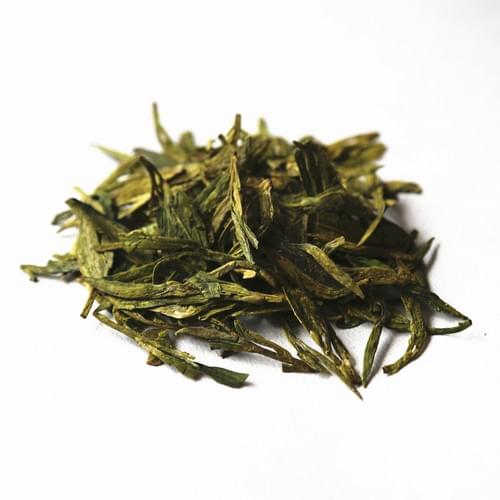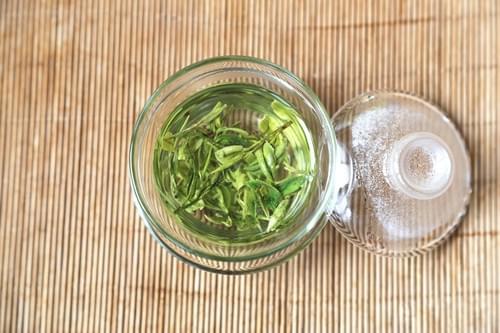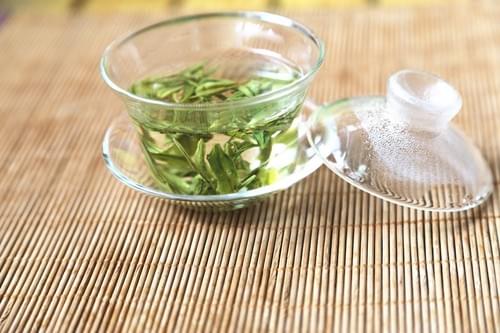
Quality guaranteed, authentic Longjing tea from Hangzhou
$9.99 - $105.00
The leaves of Longjing tea are flat and smooth, with a vibrant green color. Its aroma is refreshing and lingering, while its liquor is bright and clear. The taste is mellow and refreshing, evoking a sense of spring and the bounty of nature with every sip. Longjing tea is not just a premium beverage; it's an art of life, representing the Chinese pursuit of harmony with nature, tranquility, and health.





Name: Post-Grain Rain Longjing
Origin: Longwu Town, Xihu District, Hangzhou
Grade: Post-Grain Rain Longjing (Level One)
Picking Time: After Grain Rain Festival, before Beginning of Summer.
Quality Characteristics: The leaves of Post-Grain Rain Longjing are relatively larger and the color may be darker. The aroma and taste are relatively inferior to Pre-Ming Longjing and Pre-Rain Longjing.
Production Process: It is divided into several processes such as fixing, rolling, stir-frying, and drying. The most critical part is the stir-frying process. The stir-frying technique includes control of heat, time, and temperature, and requires experienced tea makers for fine operation.
Taste Characteristics: The taste of Post-Grain Rain Longjing is more mellow and resistant to brewing.
Health Benefits: It is rich in various nutrients, such as catechins, amino acids, vitamin C, etc., and has the functions of clearing away heat, detoxifying, lowering blood lipids, losing weight, and improving immunity.
Brewing Method:
1、Choose water quality. Use pure water or mountain spring water, and avoid using tap water, as the chlorine in tap water will reduce the quality of the tea soup.
2、 Prepare tea sets. Ceramic or glass tea sets can be chosen, and glass tea sets are convenient for observing the expansion process of the tea.
3、 Warm the cups. First, rinse the tea sets with boiling water to increase the temperature of the tea sets, making it easier for the tea soup to take flavor.
4、 Place the tea. According to personal taste, put 3-5 grams of Longjing tea per 100 milliliters of water.
5、Brew. Use 85-95 ℃ boiling water for brewing. First, pour a small amount of boiling water (about 1/4 cup) to soak the tea leaves, and then fill with water.
6、Shake the fragrance. Before brewing, you can shake the cup to fully moisten the tea leaves and release the fragrance.
7、Brewing skills. You can use the overhead method, middle investment method, or bottom investment method, and choose according to personal preference.
8、 Taste. Wait for the tea leaves to expand fully, then you can taste the tea soup and feel its aroma and taste.
Storage methods:
1. Low-temperature storage: Longjing tea is suitable for storage in a low-temperature environment. It is best to store it in the refrigerator, with the temperature controlled at 0-5 ℃.
2. Light-avoiding storage: Longjing tea should avoid direct sunlight. It can be stored in a cool, dry, and ventilated place.
3. Dry storage: Longjing tea should be kept dry to prevent moisture. Some desiccants can be placed in the storage container.
4. Sealed storage: Longjing tea should be sealed for storage to avoid contact between the tea and the air, which may affect the quality.
5. Separate storage: Longjing tea should be stored separately to avoid mixing with other teas to prevent flavor mixing.
In summary, when storing Longjing tea, attention should be paid to low temperature, light avoidance, dryness, sealing, and separate storage, in order to maintain the quality and taste of the tea.
Knowledge of Longjing Tea:
What is "Post-Grain Rain Longjing"? Post-Grain Rain Longjing refers to the Longjing tea picked between the Grain Rain Festival and the Beginning of Summer. If the pre-rain Longjing has relatively tender buds and leaves, a bright green color, a rich aroma, and a sweet and mellow taste, then the Post-Grain Rain Longjing's buds and leaves grow relatively faster, and accumulate more contents, thus having a more mellow and resistant to brewing taste.
Other related knowledge:
What are the 24 Solar Terms?
The "24 Solar Terms" are an important part of the ancient Chinese calendar, used to guide agricultural production and daily life. The 24 Solar Terms divide the year into 24 equal parts, each about 15 days long, with one solar term occurring at regular intervals, namely, the Beginning of Spring, Rain Water, the Waking of Insects, the Spring Equinox, Clear and Bright, the Grain Rain, the Beginning of Summer, the Lesser Fullness of Grain, Grain in Ear, the Summer Solstice, the Lesser Heat, the Greater Heat, the Beginning of Autumn, the End of Heat, White Dew, the Autumnal Equinox, Cold Dew, Frost's Descent, the Beginning of Winter, the Minor Snow, the Major Snow, the Winter Solstice, the Lesser Cold, and the Greater Cold. Each solar term has its unique climate and phenological characteristics, such as the rain falling profusely during the Clear and Bright season, the temperature rising in the Beginning of Summer, and the day and night being equally long in the Autumnal Equinox. The 24 Solar Terms play an important guiding role in China's agricultural production and daily life, and also reflect the essence of traditional Chinese culture.
What is the Grain Rain Festival?
The Grain Rain Festival is one of the 24 traditional Chinese solar terms and the last solar term in spring. The Grain Rain Festival generally falls between April 19 and 21 in the Gregorian calendar each year, when the sun reaches the 30th degree of the ecliptic.
Like the Rain Water, Clear and Bright, Lesser Fullness of Grain, and Grain in Ear solar terms, the Grain Rain Festival is a solar term that reflects the phenomenon of precipitation and is a reflection of the ancient farming culture on the seasons. The name "Grain Rain" comes from the saying that "rain brings forth hundreds of grains," and it is also the best time for sowing, transplanting seedlings, and planting melons and beans.
There are some traditional customs associated with the Grain Rain Festival, such as offering sacrifices to the sea, enjoying flowers, walking during the Grain Rain, and eating Chinese toon. On the day of the Grain Rain Festival, fishermen in coastal areas hold sea sacrifices to pray for the blessings of the sea god for a safe voyage and a full catch of fish and shrimp. In the northern region, there is a custom of enjoying flowers. Around the Grain Rain, it is the time when peonies are in full bloom, so peonies are also known as "Grain Rain flowers." In the southern region, there is a custom of walking during the Grain Rain. On this day, young women go to visit relatives in the village or take a walk in the wild, symbolizing the integration with nature and strengthening the body. In addition, the taste of Chinese toon is the best before and after the Grain Rain, so there is a custom of eating Chinese toon in the south during the Grain Rain.
What is the Beginning of Summer?
The Beginning of Summer is the seventh solar term in the 24 solar terms and the first solar term in summer. The Beginning of Summer generally falls between May 5 and 7 in the Gregorian calendar each year, when the sun reaches the 45th degree of the ecliptic.
The Beginning of Summer marks the farewell to spring and the beginning of summer. People generally consider it an important solar term where the temperature rises significantly, hot summers approach, thunderstorms increase, and crops enter a peak growth period.
There are many traditional customs associated with the Beginning of Summer, such as greeting summer, tasting new foods, and playing the egg competition. On the Beginning of Summer, ancient emperors would lead civil and military officials to the southern suburbs of the capital to greet summer and hold a ceremony to greet summer. In the folk, people would drink cold drinks to cool off on the Beginning of Summer; in the southern region, there is a custom of tasting new foods. People taste seasonal and fresh foods for good health and good luck; on the Beginning of Summer, people also play the egg competition, where children compete by using boiled eggs, and the one with a hard shell that doesn't break wins.
The Beginning of Summer is an important solar term that marks the transition of seasons and an important stage in crop growth. At the same time, the Beginning of Summer is also a season full of vitality and hope, where people enjoy the sun, outdoor activities, and fresh foods, feeling the vitality and energy of nature.






